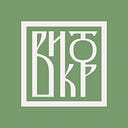Defining your own art style
Art style is a set of stylistic features that distinguish the works of one author or artist from another in the same artistic-stylistic field. This includes stylistic and compositional techniques, methods of form and counterform construction, rhythms, visual plasticity, and, of course, decorative methods and elemeants. My current definition of an artist’s art style is not that comprehensive and all-emracing, but it provides a necessary foundation.
It might seem that the concept of an art style in calligraphy seems unnecessary and synthetic, but my observation of the work of other outstanding calligraphers and letterers allows me to distinguish their work. However, art style in calligraphy does exist. Of course, in calligraphy there are many intersected areas and styles, since this profession is quite narrow, compressed to a certain amount of basic letters, it’s full of copying and “collectively invented elements”, but this still gives each author and letter artist the ability to develop his recognizable palette of visual elements.
An artist can also be without a recognizable art style, they’re a so-called “jack of all trades”. This is quite a common phenomenon in the field of graphic design. The absence or presence of art style is neither a stigma nor an advantage. Being a competitive designer requires an understanding and ability to repeat different styles and techniques, while to be a successful artist requires the crystallization of one’s own recognizable authorial style. And again, previous statements can be easily doubted, since there are many artists that are designers and artists at the same time, which is sometimes called “multidisciplinary artists”.
An art style can be self-proclaimed or assigned to an artist by his viewers. But there are certain conditions that artist has to face. In some areas, “art style” is assigned to the performer only by competent and understanding colleagues and art critics. If the author self-proclaims publicly his style, then this statement must be supported by either an extensive dedicated work, or by simple blind self-confidence. For the best effect, it is better to have both parameters in your portfolio.
